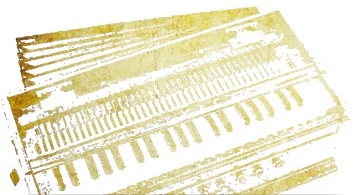
|
Acoustics of Harmonium Reeds part 2
 posted by Daniel on February 6th, 2012
posted by Daniel on February 6th, 2012
|
As a kid, my favorite musical instrument to play was the alto saxophone. Now that I spend most of my musical time playing
harmonium, I often wonder at the connection between the two. After all, both instruments produce their sound by forcing a stream of air across a reed. Today, however, I realized what fundamentally sets apart these two types of instruments.
For a saxophone, as with a clarinet, the reed is cut from cane and is rather soft and pliable. As a material, it exhibits no preference for one frequency of vibration over another, and so with just one reed on the saxophone's mouthpiece, a full range of notes can be played - from quite low to very high. As my fingers pressed the saxophone's keys, pads closed up holes in the long metal tube body, effectively changing the length of the resonating chamber. It was this length that determined the frequency of vibration (i.e. the pitch - the note), the pliable cane reed vibrating more or less quickly to keep pace with the more dominant tube-length attribute.
With a harmonium, this is not the case! Every single note on the harmonium's keyboard has a different reed beneath it. The size of the air chamber (the boxes of the harmonium) never changes. Instead, the reeds are cut to specific lengths (low notes are longer reeds, high notes are shorter reeds) and made of metal (usually brass) which expresses a strong preference for a specific vibrating frequency. Such reeds are suited for playing a specific note, and none other, which for a harmonium fits the bill perfectly - but would spell disaster for a saxophone.
And so I reach a new conclusion: A saxophone would never work with a metal reed, and a harmonium will never work with cane reeds.
























